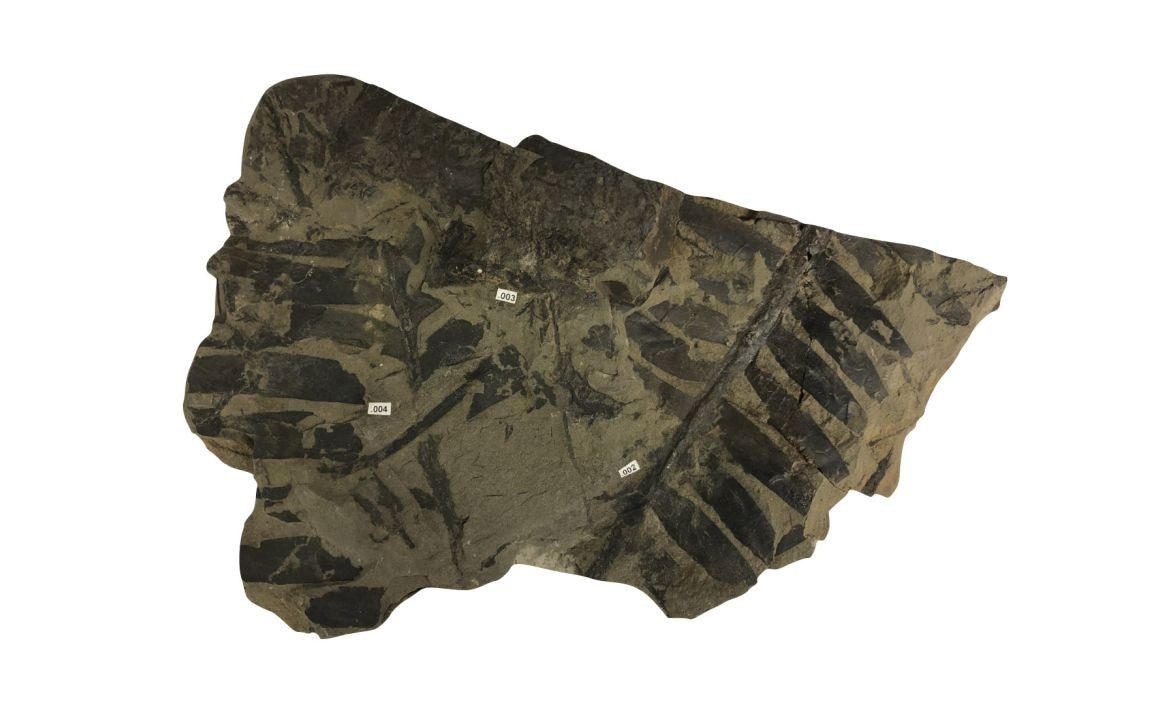In the Mesozoic Era, cycads, an ancient group of plants once favored by grazing dinosaurs, played a crucial role in sustaining various prehistoric creatures.
 A fossilized cycad specimen that was sampled for nitrogen isotopes that would indicate the atmosphere it grew in. Image Credit: Michael Kipp – Duke University.
A fossilized cycad specimen that was sampled for nitrogen isotopes that would indicate the atmosphere it grew in. Image Credit: Michael Kipp – Duke University.
These palm-like plants were abundant in the forest understory around 252 million years ago. Today, only a handful of cycad species persist in tropical and subtropical regions, with most of their counterparts having become extinct, much like the dinosaurs they coexisted with.
The decline of cycads in their original habitats commenced in the late Mesozoic and extended into the early Cenozoic Era, marked by significant events such as the asteroid impact and volcanic activity at the K-Pg boundary 66 million years ago. Despite the challenges, a few cycad groups managed to survive to the present day.
A recent study performed reveals that the surviving cycad species owe their persistence to symbiotic bacteria in their roots. The study was published in Nature Ecology & Evolution on November 16th, 2023.
These symbiotic bacteria play a crucial role in providing nitrogen for the plants' growth. Similar to contemporary legumes and other nitrogen-fixing plants, these cycads engage in a mutual exchange with their root bacteria, offering sugars in return for nitrogen extracted from the atmosphere.
Lead author Michael Kipp's interest lies in the fact that the tissues of nitrogen-fixing plants can serve as a record of the atmospheric composition during their growth. By combining geochemistry with the fossil record, Kipp aims to unravel the Earth's climate history.
With prior knowledge that contemporary cycads engage in nitrogen fixation, Kipp initiated the examination of ancient plant fossils during his Ph.D. studies at the University of Washington.
His objective was to gain a fresh perspective on ancient atmospheres. The majority of the ancient cycads examined, however, demonstrated that they did not engage in nitrogen fixation, and it was discovered that these were part of the extinct lineages.
Instead of being a story about the atmosphere, we realized this was a story about the ecology of these plants that changed through time.
Michael Kipp Ph.D., Study Lead Author, Duke University
In the past decade, Kipp dedicated nearly ten years to this discovery, initially at UW and later as a postdoctoral researcher at CalTech. In 2023, Kipp is embarking on a new chapter as he joins the Duke faculty, taking on the role of Assistant Professor in Earth and Climate Sciences within the Nicholas School of the Environment.
Kipp’s aim is to persist in utilizing the fossil record to unravel Earth’s climate history, providing insights that contribute to our understanding of its potential future.
Kipp highlighted that much of our knowledge about ancient atmospheres is derived from chemical analyses of ancient sea life and sediments. Introducing these methods to the study of terrestrial plants represents a novel approach in this field.
Going into the project, there were no published nitrogen isotope data from fossilized plant foliage.
Michael Kipp Ph.D., Study Lead Author, Duke University
Perfecting the technique and obtaining samples of valuable plant fossils, which museum curators were hesitant to see vaporized for data collection, proved to be a time-consuming process for him.
In the few fossil samples that are of surviving (cycad) lineages, and that are not so old—20, 30 million years—we see the same nitrogen signature as we see today.
Michael Kipp Ph.D., Study Lead Author, Duke University
This implies that the nitrogen in the surviving cycads originated from symbiotic bacteria. However, in the older and extinct cycad fossils, the signature of this nitrogen was missing. What remains uncertain is how nitrogen fixation benefited the surviving cycads.
It could have assisted them in adapting to the significant climate changes, enabled them to compete more effectively with the rapidly growing angiosperm plants that thrived post-extinction, or possibly played a role in both scenarios.
Kipp stated, “This is a new technique that we can do a lot more with.”
Source:
Journal reference:
Kipp, M. A., et al. (2023) Nitrogen isotopes reveal independent origins of N2-fixing symbiosis in extant cycad lineages. Nature Ecology & Evolution. doi.org/10.1038/s41559-023-02251-1.